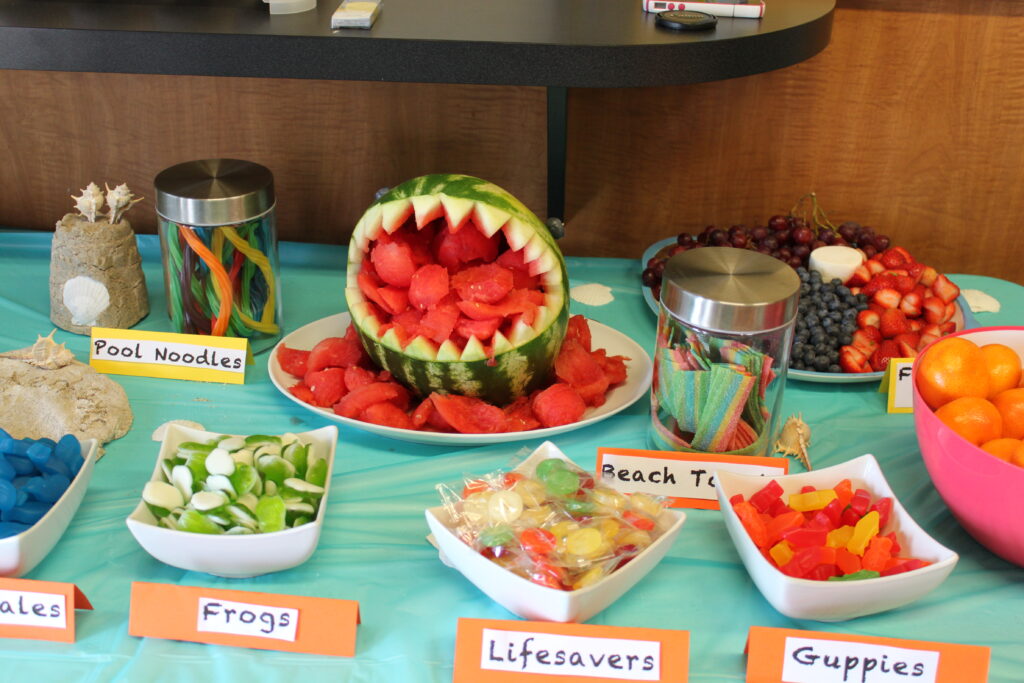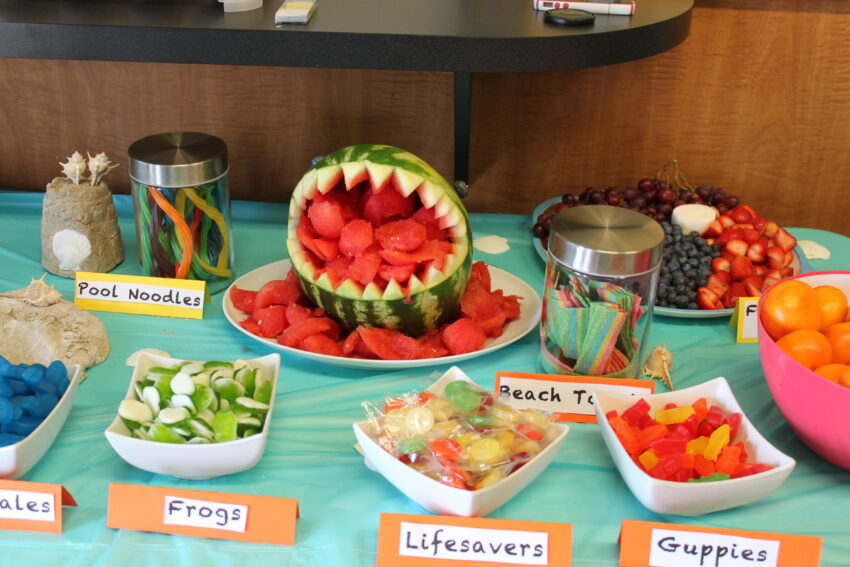
Food Inspired: Exploring Culinary Creativity and Innovation
The world of gastronomy is constantly evolving, driven by chefs, home cooks, and food enthusiasts who find inspiration in diverse sources. From art and travel to childhood memories and cultural traditions, the concept of being food inspired is a powerful catalyst for culinary creativity and innovation. This article delves into the fascinating ways in which inspiration shapes the dishes we create and the dining experiences we cherish. We’ll explore how chefs draw upon various influences to craft unique and memorable meals, and how you too can tap into your own sources of inspiration to elevate your cooking.
The Many Faces of Food Inspiration
Inspiration for a dish can arise from anywhere. For some, it might be the vibrant colors of a painting or the intricate patterns of a textile. For others, it could be the memory of a specific flavor or aroma experienced during a trip abroad. Let’s examine some common sources of food inspired creativity:
- Travel and Culture: Exploring different countries and cultures exposes us to new ingredients, cooking techniques, and flavor combinations. A trip to Thailand might inspire you to create a fragrant coconut curry, while a visit to Italy could lead to a perfect homemade pasta dish.
- Art and Design: Visual arts, like painting, sculpture, and architecture, can provide inspiration for plating techniques, color palettes, and even the overall concept of a dish.
- Nature and the Seasons: The availability of fresh, seasonal ingredients is a major source of inspiration for many chefs. The vibrant hues of autumn vegetables or the delicate flavors of spring herbs can spark creativity.
- Memories and Emotions: Nostalgia and personal experiences can be powerful motivators in the kitchen. A dish that evokes a childhood memory or a feeling of comfort can be incredibly satisfying to create and share.
- Other Chefs and Food Professionals: Observing the work of other chefs and food professionals can be a great way to learn new techniques and gain fresh perspectives.
Chefs as Artists: Translating Inspiration into Edible Masterpieces
Many chefs view themselves as artists, using food as their medium to express creativity and tell stories. They meticulously craft each dish, paying attention to every detail, from the sourcing of ingredients to the final presentation. These chefs often draw inspiration from diverse sources, transforming abstract ideas into tangible, edible experiences. Being food inspired is central to their process.
Consider the example of a chef who is inspired by the works of Monet. They might translate the Impressionist painter’s use of light and color into a dish that features a vibrant array of seasonal vegetables, arranged to mimic the painter’s brushstrokes. Or, a chef inspired by a particular piece of music might create a dish that reflects the rhythm and harmony of the composition. The possibilities are endless.
The Science Behind Food Inspiration and Creativity
While the concept of food inspired creativity might seem purely artistic, there’s also a scientific basis for it. Studies have shown that exposure to new experiences and ideas can stimulate the brain and promote creative thinking. When we try new foods, travel to new places, or engage with different forms of art, we’re essentially expanding our mental horizons and creating new neural pathways. This can lead to a greater capacity for innovation and problem-solving, both in and out of the kitchen.
Furthermore, the act of cooking itself can be a form of mindfulness and meditation. When we focus on the task at hand, paying attention to the textures, aromas, and flavors of the ingredients, we can enter a state of flow that allows creativity to flourish. This is why many people find cooking to be a therapeutic and stress-relieving activity.
How to Cultivate Your Own Food Inspired Creativity
You don’t have to be a professional chef to tap into your own sources of food inspired creativity. Here are some tips for cultivating your culinary inspiration:
- Explore New Ingredients: Visit your local farmers market or specialty food store and try something you’ve never cooked with before. Research different ways to prepare it and experiment with flavor combinations.
- Travel and Eat Locally: When you travel, make an effort to try the local cuisine. Ask locals for recommendations and be open to trying new and unfamiliar dishes. [See also: Exploring Local Cuisine While Traveling]
- Engage with Art and Culture: Visit museums, attend concerts, and read books that inspire you. Pay attention to the colors, textures, and emotions that these experiences evoke.
- Keep a Food Journal: Write down your favorite dishes, flavors, and cooking experiences. This can serve as a source of inspiration when you’re feeling stuck.
- Experiment and Don’t Be Afraid to Fail: Cooking is all about experimentation. Don’t be afraid to try new things and make mistakes. Even a failed dish can be a learning opportunity.
- Find Inspiration in Other Cooks: Follow food bloggers, watch cooking shows, and read cookbooks. Observing the work of others can spark new ideas and techniques.
The Future of Food: Innovation Driven by Inspiration
As the world becomes increasingly interconnected and technology continues to advance, the future of food is likely to be shaped by even greater levels of innovation and creativity. Chefs and food scientists are already exploring new ways to use technology to enhance the dining experience, from 3D-printed food to personalized nutrition. But at the heart of all this innovation is the fundamental human desire to create and share delicious, food inspired meals.
The power of inspiration will continue to drive culinary advancements, pushing the boundaries of what’s possible in the kitchen. Whether it’s a chef drawing inspiration from a childhood memory or a food scientist using technology to create a new flavor profile, the quest for culinary innovation will always be fueled by the human imagination. The concept of being food inspired is not just a trend; it’s a fundamental aspect of human creativity and a driving force behind the evolution of gastronomy.
Examples of Food Inspired Dishes and Concepts
To further illustrate the power of food inspired creativity, let’s consider a few specific examples:
- A dish inspired by a sunset: A chef might create a dish that features a gradient of colors, from vibrant oranges and reds to deep purples and blues, to mimic the colors of a sunset. The ingredients could include roasted vegetables, grilled fish, and a variety of sauces.
- A dessert inspired by a piece of music: A pastry chef might create a dessert that reflects the rhythm and harmony of a particular musical composition. The dessert could feature layers of different textures and flavors, arranged to create a symphony of sensations.
- A cocktail inspired by a painting: A mixologist might create a cocktail that captures the essence of a particular painting. The cocktail could feature a specific color palette, a unique blend of flavors, and a garnish that evokes the painting’s subject matter.
The Importance of Authenticity in Food Inspired Creations
While drawing inspiration from various sources is essential for culinary creativity, it’s also important to maintain a sense of authenticity in your creations. Avoid simply copying the work of others and strive to develop your own unique voice and style. Let your personal experiences and perspectives shine through in your dishes. The most memorable and impactful food creations are those that are both innovative and authentic.
Being truly food inspired means taking the essence of an idea and transforming it into something new and personal. It’s about honoring the source of inspiration while adding your own unique twist. This is what separates a great chef from a mere imitator. It’s about finding your own culinary voice and using it to create dishes that are both delicious and meaningful.
Conclusion: Embracing the Power of Food Inspiration
In conclusion, the concept of being food inspired is a powerful force in the world of gastronomy. It fuels creativity, drives innovation, and allows chefs and home cooks alike to create unique and memorable dining experiences. By exploring new ingredients, engaging with art and culture, and cultivating a sense of mindfulness in the kitchen, you can tap into your own sources of inspiration and elevate your cooking to new heights. So, embrace the power of food inspired creativity and let your imagination run wild!
